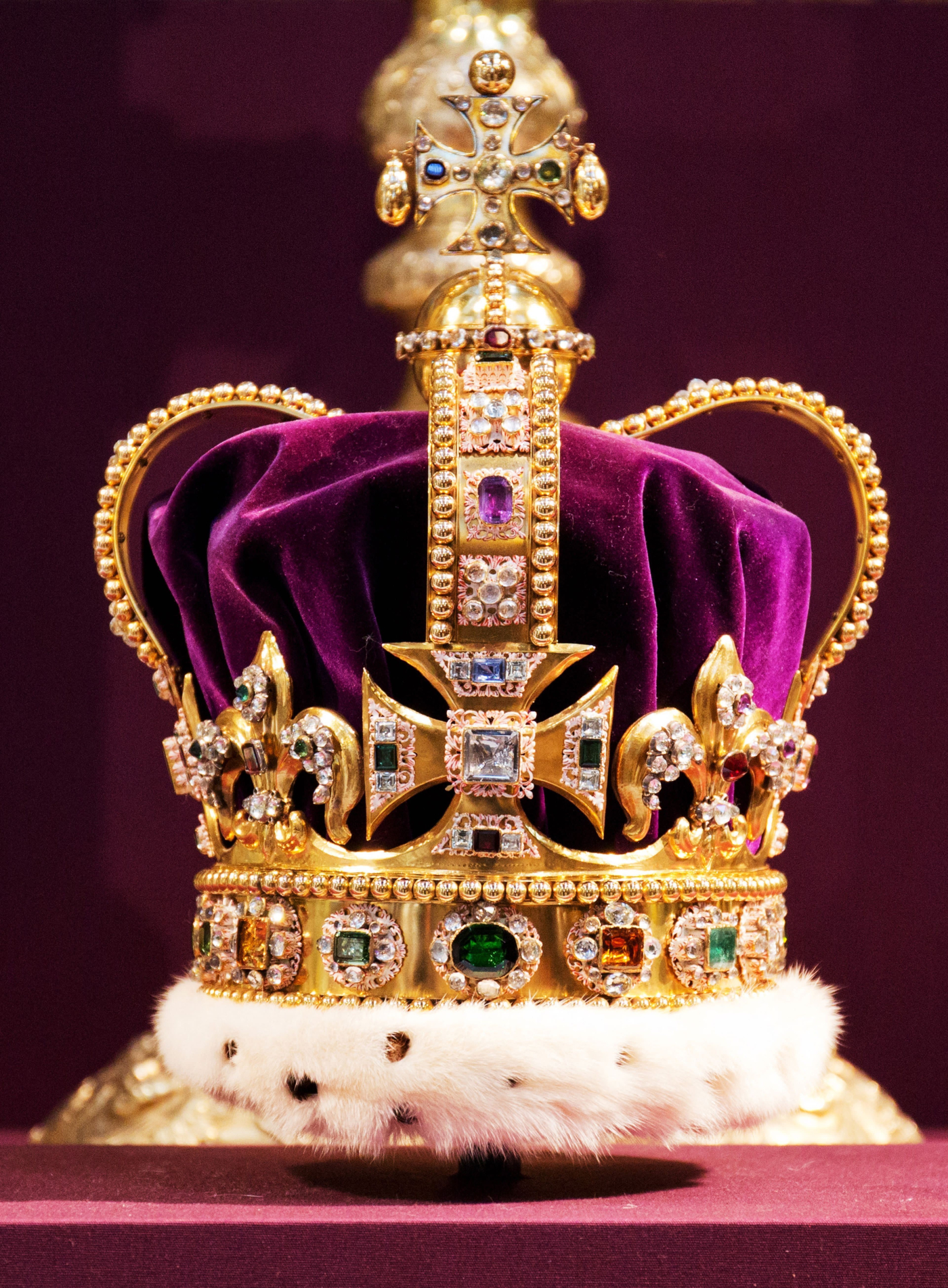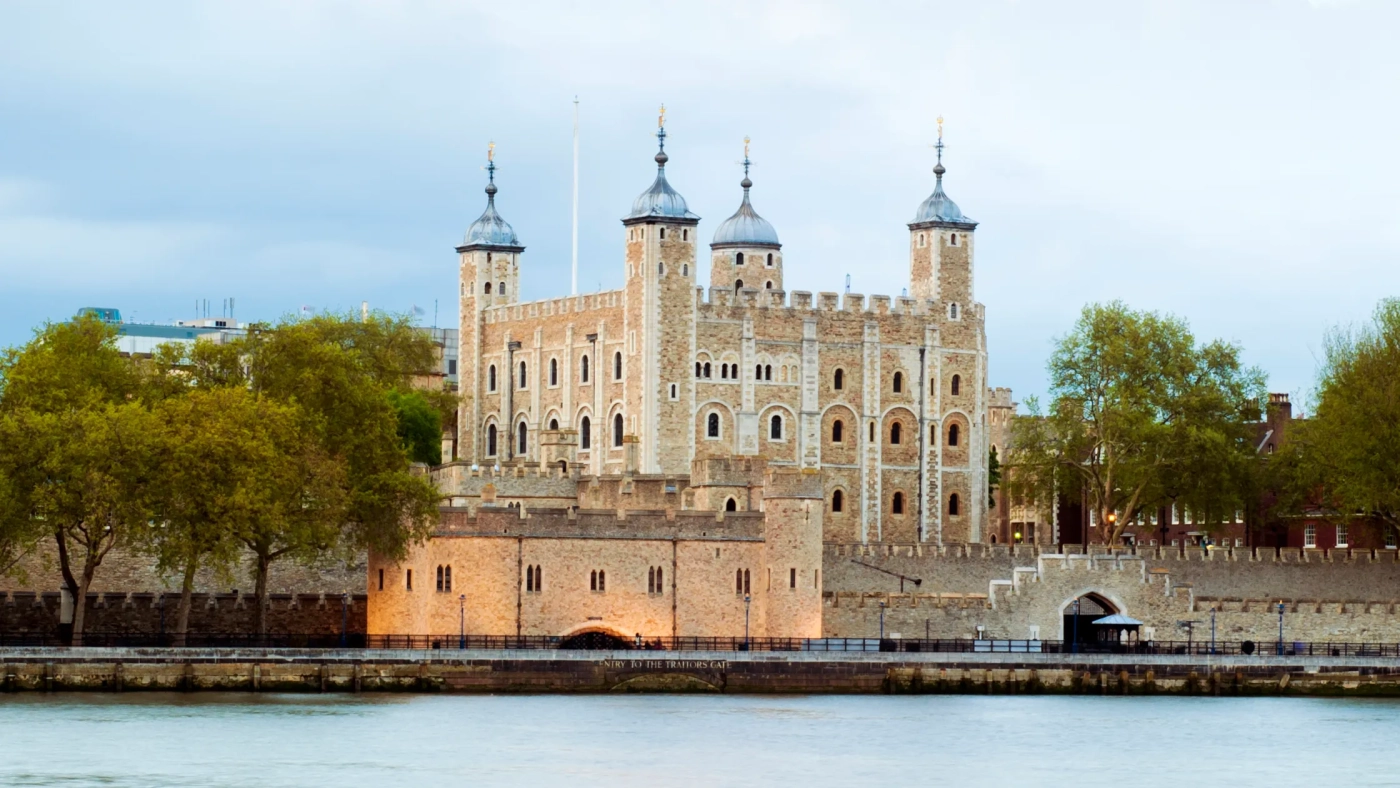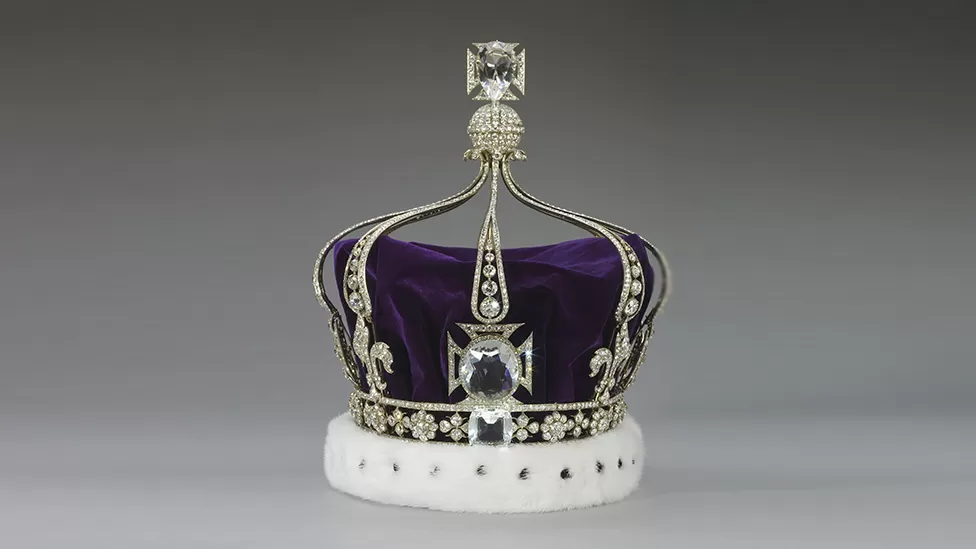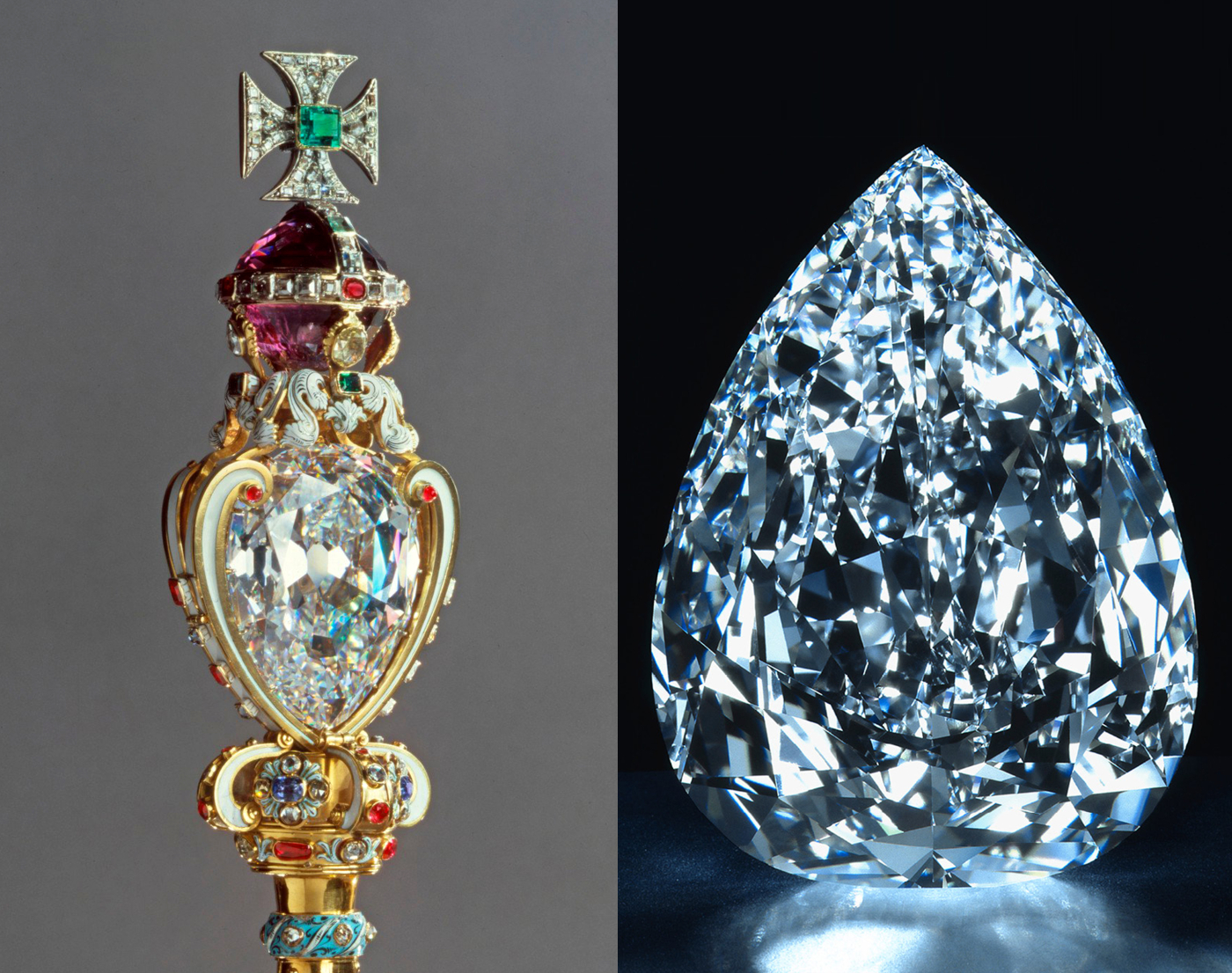The Crown Jewels of the United Kingdom and their gemstones
Traditionally, crown jewels are symbols of wealth, power and favour: wealth due to their value; power because traditionally they were exclusively worn by heads of state; and favour because their priceless stones are often gifts from foreign statesmen. While many countries have moved from monarchy to parliamentary democracy, the tradition of crown jewels continues and many of these collections have either been passed on through royal families, such as in the Dutch royal family, or are in the safekeeping of the state, such as the French crown jewels; although in France’s case, their relationship with monarchy has been turbulent and much was sold off over a century ago. Given the recent passing of Queen Elizabeth II and coronation of her successor, King Charles III, we thought it topical to examine the history of the Crown Jewels of the United Kingdom.
What are the Crown Jewels?

The phrase ‘Crown Jewels of the United Kingdom’ refers to a collection of items that includes the crowns and tiaras, sceptres, bracelets and even ceremonial spurs and some plates and cups. Perhaps the most famous piece from the collection is St Edward’s Crown, which is used to symbolise the moment of coronation. While St Edward’s Crown has a long history in the royal family, it is actually a copy of an earlier crown of the same name that had either been sold or melted in 1649 when the monarchy was abolished by parliament. The current crown is made from 22-carat gold and has 444 inset gemstones.
The Coronation Regalia
Many of the Crown Jewels are used during coronation, and this collection is known as the Coronation Regalia; while the ritual itself is ancient, most of the regalia is not. The collection includes the aforementioned St Edward’s Crown, two sceptres, several swords, an orb, spurs and a golden ampulla, used to hold oil for the ceremony. The only original item to have survived the English Civil War from the collection is the Coronation Spoon, which is believed to date to around 1349 and used to anoint the oil from the ampulla. One of the other key items of the coronation is the Coronation Chair, which was made in 1296, making it even older than the Coronation Spoon; however, the Chair is not part of the Coronation Regalia.
Who keeps the Crown Jewels?

The Crown Jewels have been kept in the Tower of London (above) at Jewel House since 1661 and include a number of crowns and over 23 thousand gemstones. The Tower of London itself is protected by Yeomen Warders, popularly referred to as the Beefeaters. Their three principal jobs include safeguarding the Crown Jewels, giving guided tours and looking after any prisoners in the Tower, although the Tower hasn’t had any captives since 1952 when the infamous Kray twins were held for a few days. When the Jewels are not in use, they’re kept on display for tourists to view.
Notable stones in the Crown Jewels
Traditionally, some of the most unique diamonds have made their way into royal collections, and in some cases out of them as well, often due to political strife. A notable example of this is the Hope diamond, a blue diamond from India weighing 45.52 carats; it was sold by a French Merchant in 1668 to French King Louis XIV, then stolen during the French Revolution and bought by King George IV of England in the early 1800s, who sold it in 1830; from here it also belonged to a Russian prince named Ivan Kanitowsky, a Turkish Sultan and then the Hope family, from whose ownership it takes its name. The Crown Jewels are no exception from this idea, and the collection holds some of the most notable diamonds in the world including The Koh-i-Noor diamond and the Cullinan I and II. It also contains the Stuart and St Edward’s Sapphires as well as the Black Prince’s Ruby.
The Koh-i-Noor

The Koh-i-Noor is famous as one of the largest cut diamonds in the world at 105.6 carats, residing in the Crown of Queen Elizabeth the Queen Mother. The origin of the stone belongs to legend, with first written evidence arising in the 1740s, when it was said to weigh 186 carats. It was believed to have been looted by Nader Shah during the invasion of Northern India, changing hands between Asian imperial forces until the British Empire annexed the Punjab; at this point, the diamond came into the hands of the East India Company, who offered it to Queen Victoria in 1850. In 1850, it had a flat base with an asymmetrical shape composed of both triangular and rectangular facets; this shape was not unusual given its origin and period, and a similar design can be seen on the Daria-i-Noor, which resides in the Iranian Crown Jewels. However, the British public were not familiar with this style and it gathered a lukewarm reception upon public display; this led Prince Albert to ask renowned diamond cutter Moses Coster to recut the diamond into an oval brilliant, which he did with a steam-powered mill. Since then, it has been worn only by royals until being set in the Crown of Queen Alexandria in 1901, then transferred to the Crown of Queen Mary in 1911 and finally to its present crown, where it has resided since 1937.
The Cullinan I and II

Both the Cullinan I and II diamonds originate from the same rough stone, which was also called Cullinan and weighed 3,106 carats; the stone was discovered in South Africa in a mine owned by Thomas Cullinan, after whom it got its name. It was initially put on sale in London but remained unsold for two years until bought by the Transvaal Colony, a territory which later became part of South Africa. The Prime Minister of the Colony, Louis Botha, presented it to the British monarch at the time, Edward VII, and it was then given to Joseph Asscher, a famous diamond cutter. After great consideration, Asscher cleaved the diamond into nine major stones weighing 1,055.89 carats, as well as 96 minor brilliants and further fragments weighing 19.5 carats. As previously arranged, the Cullinan I and II were returned to Edward VII while the rest became property of Joseph Asscher as payment for his services. Edward VII purchased the Cullinan VI separately, and the diamonds that remained were purchased by the South African government and presented to Queen Mary in 1910, who became Queen Consort after Edward VII’s death.
The Cullinan I, also known as the Great Star of Africa, has a pendeloque cut with 74 facets and weighs 530.2 carats. It is the largest colourless diamond in the world and it currently sits at the top of the Sovereign’s Sceptre with Cross, one of two gold sceptres used in coronation. The sceptre itself dates back to 1661, represents the monarch’s authority as head of state, and was modified in 1910 to accommodate the Cullinan I.
The Cullinan II, also known as the Second Star of Africa, is a brilliant cushion-cut diamond with 66 facets, weighing 317.4 carats. It is placed in the Imperial State Crown, which is worn during the first procession following the coronation.
Sapphires and rubies
As well as the Cullinan diamonds, the other most notable stones in the Crown Jewels include the Black Prince’s Ruby, the St. Edward’s Sapphire and the Stuart Sapphire.
The Black Prince’s Ruby weighs 170 carats and is an uncut, irregular red spinel from the 14th century – it currently sits above the Cullinan II in the Imperial State Crown. It may have originated from Afghanistan, which was the primary source of rubies in the middle-ages.
St. Edward’s Sapphire is believed to have a longer history than any other stone in the collection; it is named after Edward the Confessor who became monarch in 1042 and who was reported to have worn the stone on a ring. The ring went with him to the grave but Edward’s body was re-interred in 1163, which may have been when the ring was taken. It is believed to have been re-cut at the request of Charles II, into a rose cut, and is currently mounted at the top of the Imperial Crown at the centre of the cross. Its origin is unclear but many similar stones have originated from Asia, likely either from Afghanistan or Sri Lanka.
The Stuart Sapphire weighs 104 carats and is one of the most-travelled gems in the collection, probably initially belonging to Charles II; it was taken to France as James VII fled the Glorious Revolution, later becoming property of his son, James Stuart, and his grandson in turn; his grandson was an Italian Cardinal named Henry Benedict, who had been born in exile. It was then bought by George III in 1807, at which point it returned to the UK. It has an oval shape and was drilled down almost half its length at some point. It is set in the Imperial Crown in the circlet, taking place as the lowest gemstone at the front. Its origin is unclear although it may also have originated from Asia.
An unparalleled collection
The Crown Jewels of the United Kingdom represent 800 years of monarchy, holding both political power and, more recently, symbolic power. They are the only set in Europe that are still in use to this day, and are used for coronation, to invest commonwealth heads of state, and to formally appoint heads of the Church of England and the armed forces. Containing so many unique and noteworthy diamonds and other gemstones, they’ve become one of the most significant collections in the world and they continue to embody the heritage of the United Kingdom.
